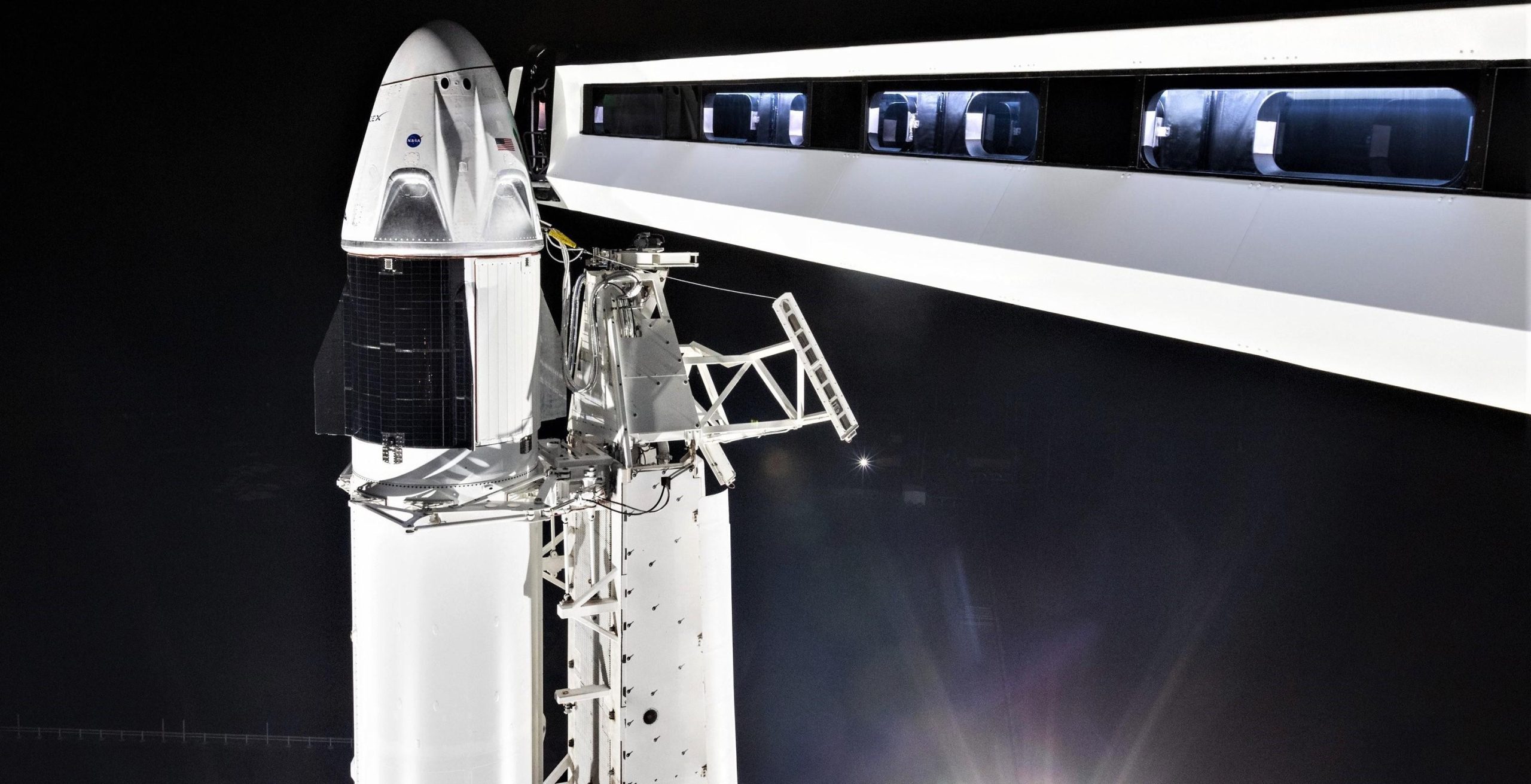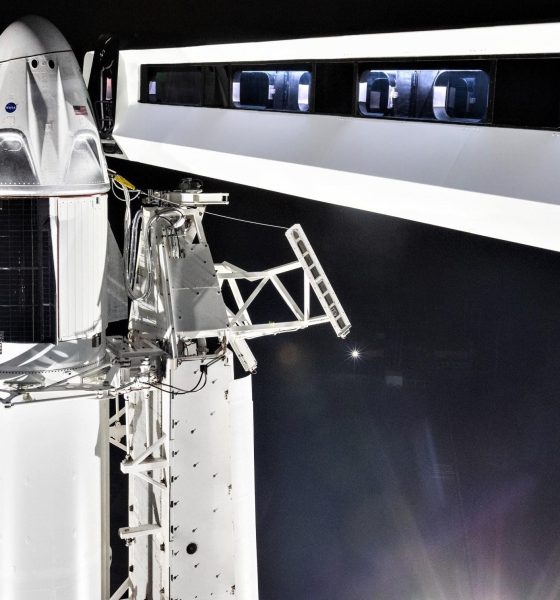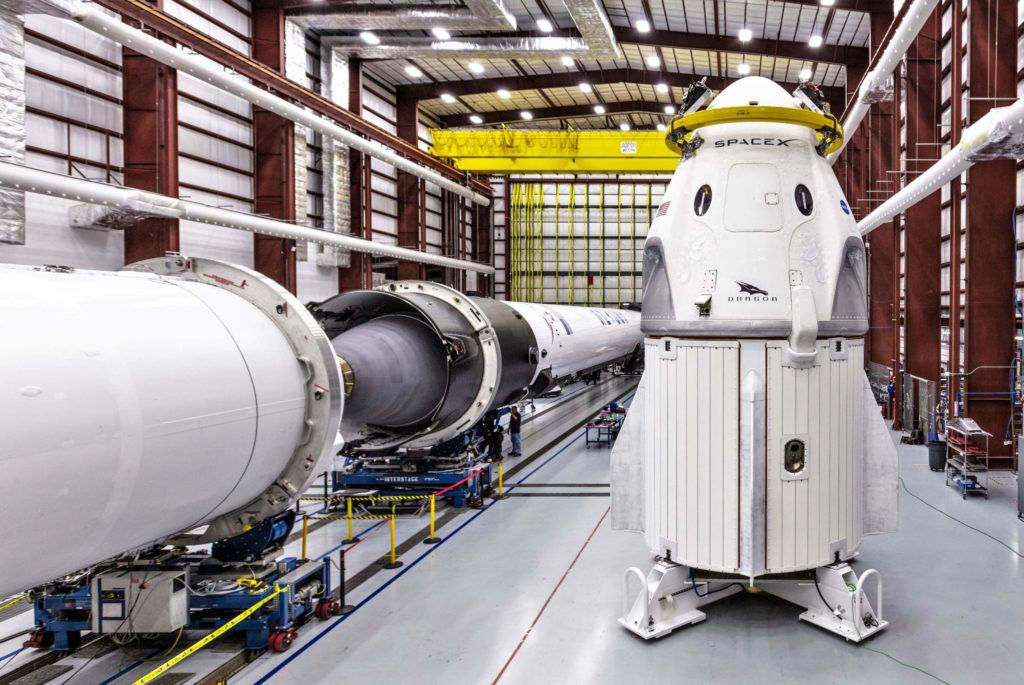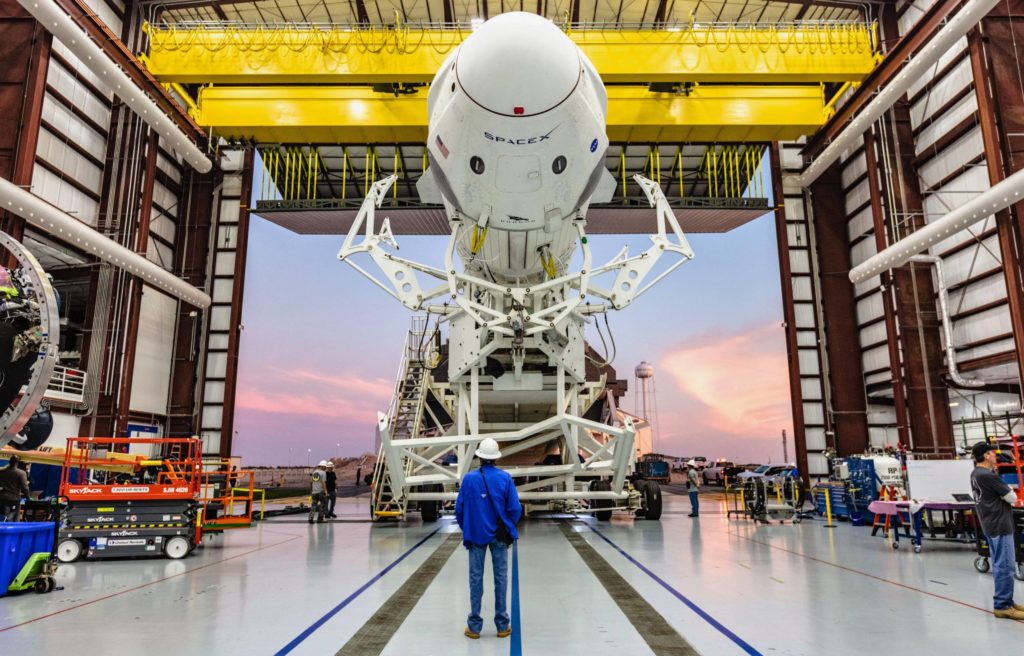

SpaceX
SpaceX shows off Crew Dragon atop Falcon 9 as govt shutdown kills momentum
Late last week, SpaceX published official photos of Crew Dragon’s first trip out to Launch Complex 39A (Pad 39A) atop its specially-certified Falcon 9 Block 5 rocket, showing off what looks to have been a successful integrated fit check and an important precursor to the debut launch of the company’s first human-rated spacecraft.
Despite the obvious readiness of SpaceX’s hardware and facilities for this historic mission, the company has been met with a brick wall that has almost indefinitely killed almost all forward momentum towards Crew Dragon’s first trip to orbit, appearing in the form of elected leaders so inept that they have failed to properly fund the bureaucracies underpinning the vast majority of the federal government for more than three weeks, NASA included.
About a month away from the first orbital test flight of crew Dragon https://t.co/U01Oxu3M7E
— Elon Musk (@elonmusk) January 5, 2019
NASA has been severely impacted by the shutdown since it began on Dec 21 and has been operating at barely 5% capacity since then, just shy of the equivalent of throwing a bucket of wrenches into an intricately complex machine. Put simply, the entire agency is more or less at a standstill, aside from the most basic of operations and the support of spacecraft and facilities that cannot pause for the convenience of childish games of political brinksmanship. Among the parts of the agency harmed are those involved with the late-stage Commercial Crew Program (CCP) certification work and general program support, directly translating into an almost indefinite pause on Crew Dragon’s autonomous launch debut, known as DM-1.
Science-funding agencies that are open: DOE, DOD, and NIH.
The big ones that are affected: NSF, NIST, NOAA, NASA, EPA, USGS, FDA, Smithsonian, USDA@sciencemagazine has a rundown of the impact of the shutdown for agencies with a science focus https://t.co/uAPz7AWoVT
— Maryam Zaringhalam, PhD (@webmz_) January 5, 2019
Despite the ironic fact that their operations would likely be considered critical and thus be free of the brunt of a government shutdown’s impact once SpaceX’s Crew Dragon and Boeing’s Starliner are demonstrated and declared operational, almost all conceivable programmatic aspects of Commercial Crew Program currently fall into non-critical categories as both providers prepare for their first uncrewed demonstration missions to orbit. These autonomous demo missions will be immediately followed by crewed demonstration missions in which real NASA astronauts will fly to the International Space Station before NASA can finally complete the operational certification of Crew Dragon and Starliner.
Simultaneous ironic and gratingly painful, the first operational crewed launches are explicitly dependent on certifications to immediately follow crewed demonstration launches, which themselves are no less dependent upon the receipt of NASA certifications after each spacecraft’s first uncrewed demonstration launch. As such, every delay to CCPs uncrewed demo launches will likely translate into a near 1:1 delay (if not worse) for the operational debut of both spacecraft, already operating dangerously close to the edge of assured access to the ISS thanks to a range of delays caused by technical challenges and NASA sluggishness.
- An impressive view of Crew Dragon (DM-1), Falcon 9 B1051, and its upper stage. (SpaceX)
- The integrated DM-1 Crew Dragon ‘stack’ rolled out to Pad 39A for the first time in the first few days of 2019. (SpaceX)
- Falcon 9 B1051 and Crew Dragon vertical at Pad 39A. (SpaceX)
- The view of Crew Dragon from SpaceX’s freshly-installed Crew Access Arm at Pad 39A. (SpaceX)
NASA currently relies entirely on launch contracts on Russian space agency Roscosmos’ Soyuz rocket and spacecraft to deliver NASA astronauts to the ISS, and those contracts are set to end in a fairly permanent manner as early as November 2019, although the end of NASA’s Soyuz access could potentially be pushed back as far as Q1 2020. Ultimately, a single month of delays at this phase of SpaceX’s Crew Dragon launch debut preparations could snowball into even worse delays for the crewed DM-2 and PCM-1 (Post-Certification Mission) missions and beyond, all of which are heavily dependent on NASA completing a vast sea of paperwork that would likely be ongoing at this very moment if 95% of the agencies staff wasn’t furloughed.

Thankfully, SpaceX at least was able to still perform a dry Falcon 9 and Crew Dragon rollout at Pad 39A, likely serving as an integrated fit-test for the rocket, spacecraft, and fresh pad infrastructure, which includes a brand-new Crew Access Arm (CAA) installed near the end of 2018. While spectacular and apparently successful, it’s undeniably hard to ignore the marring of the government shutdown and inevitable schedule delays it will cause.
SpaceX and its hardware is clearly ready for business – how much longer will we have to wait for the elected representatives of the US demonstrate a similar interest in doing their jobs?
For prompt updates, on-the-ground perspectives, and unique glimpses of SpaceX’s rocket recovery fleet check out our brand new LaunchPad and LandingZone newsletters!

Elon Musk
Elon Musk’s Biggest Revelations on AI, Robots, and the Future of Work from the Moonshots Podcast

Elon Musk’s appearance on the Moonshots with Peter Diamandis podcast was packed with bold predictions, candid admissions, and surprising tech insights. The nearly three-hour conversation covered everything from artificial intelligence to humanoid robots, geopolitics, and the future of work. Here are the top 10 most intriguing takeaways:
-
Aggressive AGI Timeline Predictions
Musk offered a detailed view on when artificial general intelligence (AGI) could emerge, suggesting it may arrive sooner than many expect, emphasizing both transformative potential and risks.
-
U.S. vs. China in the AI Race
He discussed the strategic competition between the United States and China over AI development, noting that geopolitical dynamics will shape how and who leads in the next decades.
-
Future of Job Markets
Musk touched on how AI and automation could reshape employment, predicting massive boosts in productivity alongside potential disruptions in traditional work structures.
-
Clean Energy Transition
A recurring theme was the role of clean energy in future economies, with Musk reiterating the importance of scaling sustainable power generation and storage.
-
Humanoid Robots Are Coming
On the podcast, Musk elaborated on Tesla’s work on humanoid robots, hinting at timelines and applications that go beyond factories to general-purpose assistance.
-
Tesla Roadster “Last Human-Driven Car”
Outside the core discussion topics, Musk teased features of the upcoming Tesla Roadster — calling it “the best of the last of the human-driven cars” and suggesting safety won’t be its main selling point.
-
The Role of AI in Clean Energy and Robotics
Linking AI to both energy optimization and robotics, Musk explained how smarter systems could accelerate decarbonization and task automation across industries.
-
U.S. Innovation Leadership
Musk argued that maintaining American leadership in key tech sectors like AI, space, and robotics should be a national priority, with thoughtful policy and investment.
-
Job Creation vs. Job Elimination
While acknowledging automation’s disruptive effects, he also outlined scenarios where new industries and opportunities could emerge, particularly in AI, space, and advanced manufacturing.
-
Long-Term Vision for Humanity
Throughout the conversation, Musk revisited his long-term philosophical views — including a belief in humanity’s responsibility to become a multi-planetary and technologically empowered species.
Whether you agree with Musk’s optimism or not, the podcast offers a window into the thinking of one of the most influential figures in tech today, in and why his visions continue to spark debate and inspiration.
Elon Musk
Starlink achieves major milestones in 2025 progress report
Starlink wrapped up 2025 with impressive growth, adding more than 4.6 million new active customers and expanding service to 35 additional countries, territories, and markets.

Starlink wrapped up 2025 with impressive growth, adding more than 4.6 million new active customers and expanding service to 35 additional countries, territories, and markets. The company also completed deployment of its first-generation Direct to Cell constellation, launching over 650 satellites in just 18 months to enable cellular connectivity.
SpaceX highlighted Starlink’s impressive 2025 progress in an extensive report.
Key achievements from Starlink’s 2025 Progress
Starlink connected over 4.6 million new customers with high-speed internet while bringing service to 35 more regions worldwide in 2025. Starlink is now connecting 9.2 million people worldwide. The service achieved this just weeks after hitting its 8 million customer milestone.
Starlink is now available in 155 markets, including areas that are unreachable by traditional ISPs. As per SpaceX, Starlink has also provided over 21 million airline passengers and 20 million cruise passengers with reliable high-speed internet connectivity during their travels.
Starlink Direct to Cell
Starlink’s Direct to Cell constellation, more than 650 satellites strong, has already connected over 12 million people at least once, marking a breakthrough in global mobile coverage.
Starlink Direct to Cell is currently rolled out to 22 countries and 6 continents, with over 6 million monthly customers. Starlink Direct to Cell also has 27 MNO partners to date.
“This year, SpaceX completed deployment of the first generation of the Starlink Direct to Cell constellation, with more than 650 satellites launched to low-Earth orbit in just 18 months. Starlink Direct to Cell has connected more than 12 million people, and counting, at least once, providing life-saving connectivity when people need it most,” SpaceX wrote.
Elon Musk
Starlink passes 9 million active customers just weeks after hitting 8 million
The milestone highlights the accelerating growth of Starlink, which has now been adding over 20,000 new users per day.

SpaceX’s Starlink satellite internet service has continued its rapid global expansion, surpassing 9 million active customers just weeks after crossing the 8 million mark.
The milestone highlights the accelerating growth of Starlink, which has now been adding over 20,000 new users per day.
9 million customers
In a post on X, SpaceX stated that Starlink now serves over 9 million active users across 155 countries, territories, and markets. The company reached 8 million customers in early November, meaning it added roughly 1 million subscribers in under seven weeks, or about 21,275 new users on average per day.
“Starlink is connecting more than 9M active customers with high-speed internet across 155 countries, territories, and many other markets,” Starlink wrote in a post on its official X account. SpaceX President Gwynne Shotwell also celebrated the milestone on X. “A huge thank you to all of our customers and congrats to the Starlink team for such an incredible product,” she wrote.
That growth rate reflects both rising demand for broadband in underserved regions and Starlink’s expanding satellite constellation, which now includes more than 9,000 low-Earth-orbit satellites designed to deliver high-speed, low-latency internet worldwide.
Starlink’s momentum
Starlink’s momentum has been building up. SpaceX reported 4.6 million Starlink customers in December 2024, followed by 7 million by August 2025, and 8 million customers in November. Independent data also suggests Starlink usage is rising sharply, with Cloudflare reporting that global web traffic from Starlink users more than doubled in 2025, as noted in an Insider report.
Starlink’s momentum is increasingly tied to SpaceX’s broader financial outlook. Elon Musk has said the satellite network is “by far” the company’s largest revenue driver, and reports suggest SpaceX may be positioning itself for an initial public offering as soon as next year, with valuations estimated as high as $1.5 trillion. Musk has also suggested in the past that Starlink could have its own IPO in the future.












